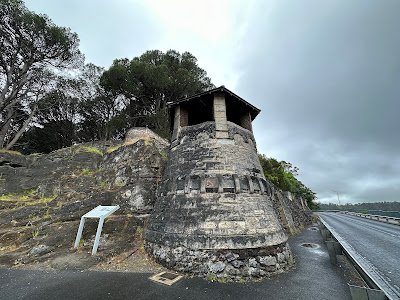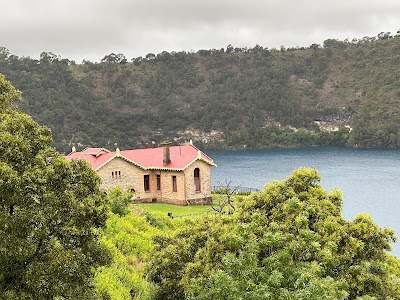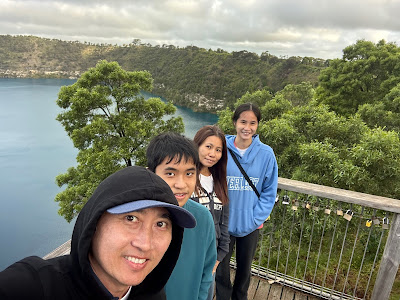Next, we arrived at another popular tourist spot at Mount Gambier, the Blue Lake, which is a large and monomictic crater lake located in a dormant volcanic maar associated with the Mount Gambier maar complex.
Early each November, the lake's sombre blue, which is in evidence during the winter months, mysteriously changes to an intense deep turquoise blue almost overnight. The colouring remains until late February, when it gradually changes. From late March, it returns to a distinct sombre blue colouring that remains until the following November.There are several viewing platforms to view the lake from different angles. And we visited every one of them. :-)
Below is the Rook Wall and Lookout that was built in 1918 after World War I. Today the wall and lookout stand in excellent condition as a monument to the hundreds of dedicated volunteers who made it all possible. It is considered to be the greatest community working bee in Mount Gambier's history.
The Blue Lake is a key water supply to residents in Mount Gambier. The lake is replenished by infiltration of local rainfall and stormwater, together with lateral groundwater flow, through the limestone aquifer. The lake is calculated to have a total capacity of 36,000 ML, the 3rd largest water storage in South Australia.
Pumping of water for Mount Gambier township commenced in 1884 from a shaft dug at the edge of the lake. The steam driven pumps were replaced by electrically powered centrifugal pumps in 1922, which were upgraded in 1972 to the present fully automated system. Below shows the pumping station.
It was drizzling at that time and the sky was very cloudy. Otherwise, the color of the lake would probably be much brighter. However, it's still one of the most bluish lakes that we had visited so far.

















No comments:
Post a Comment